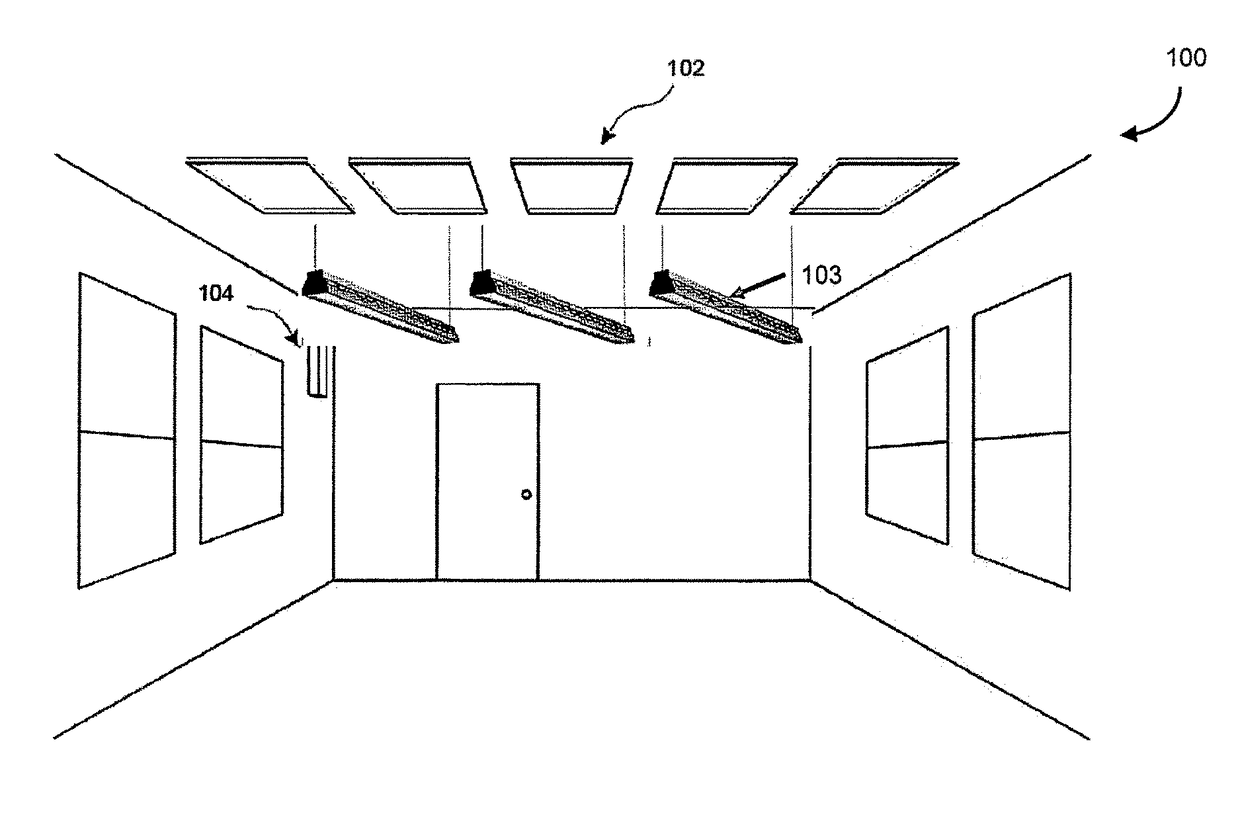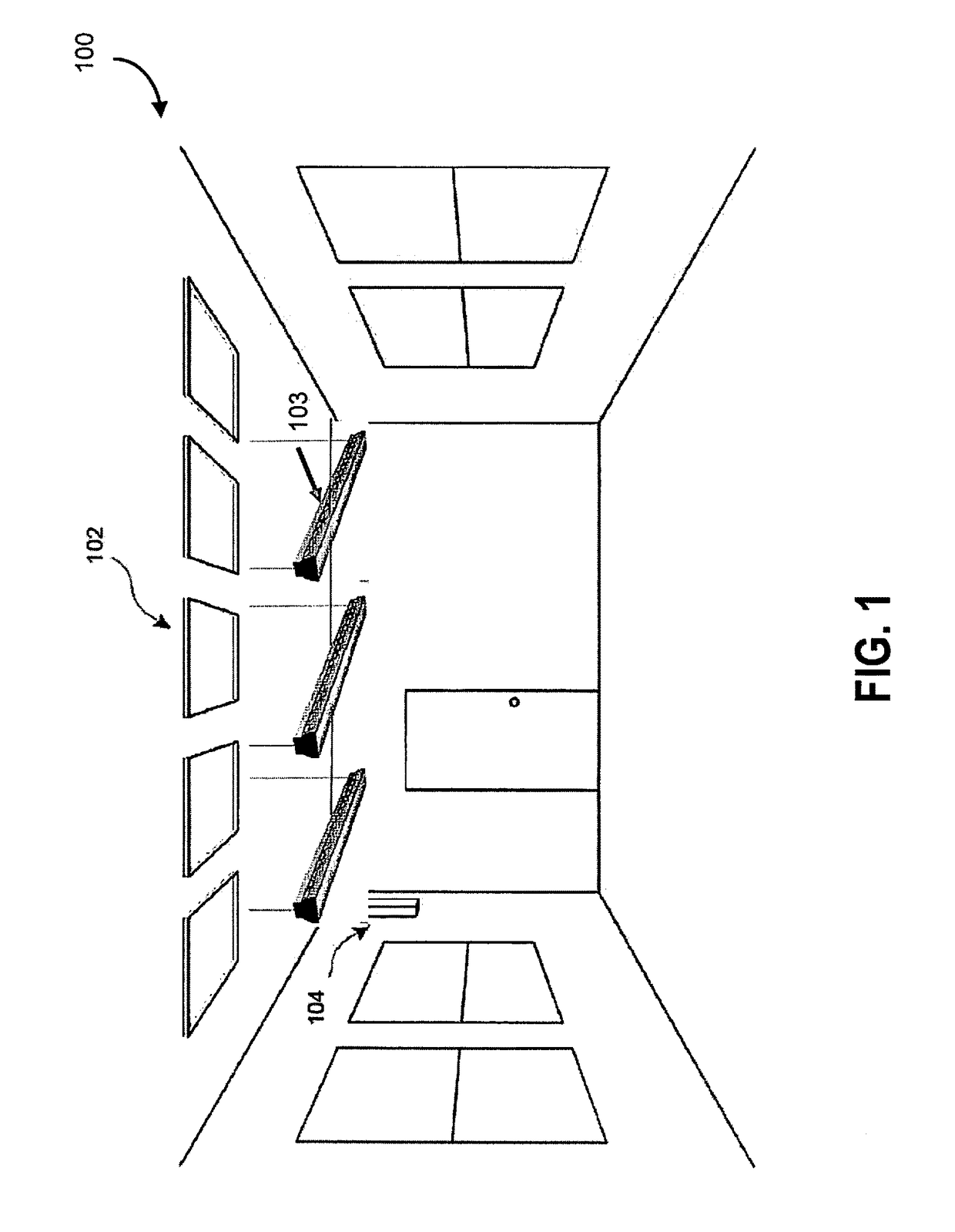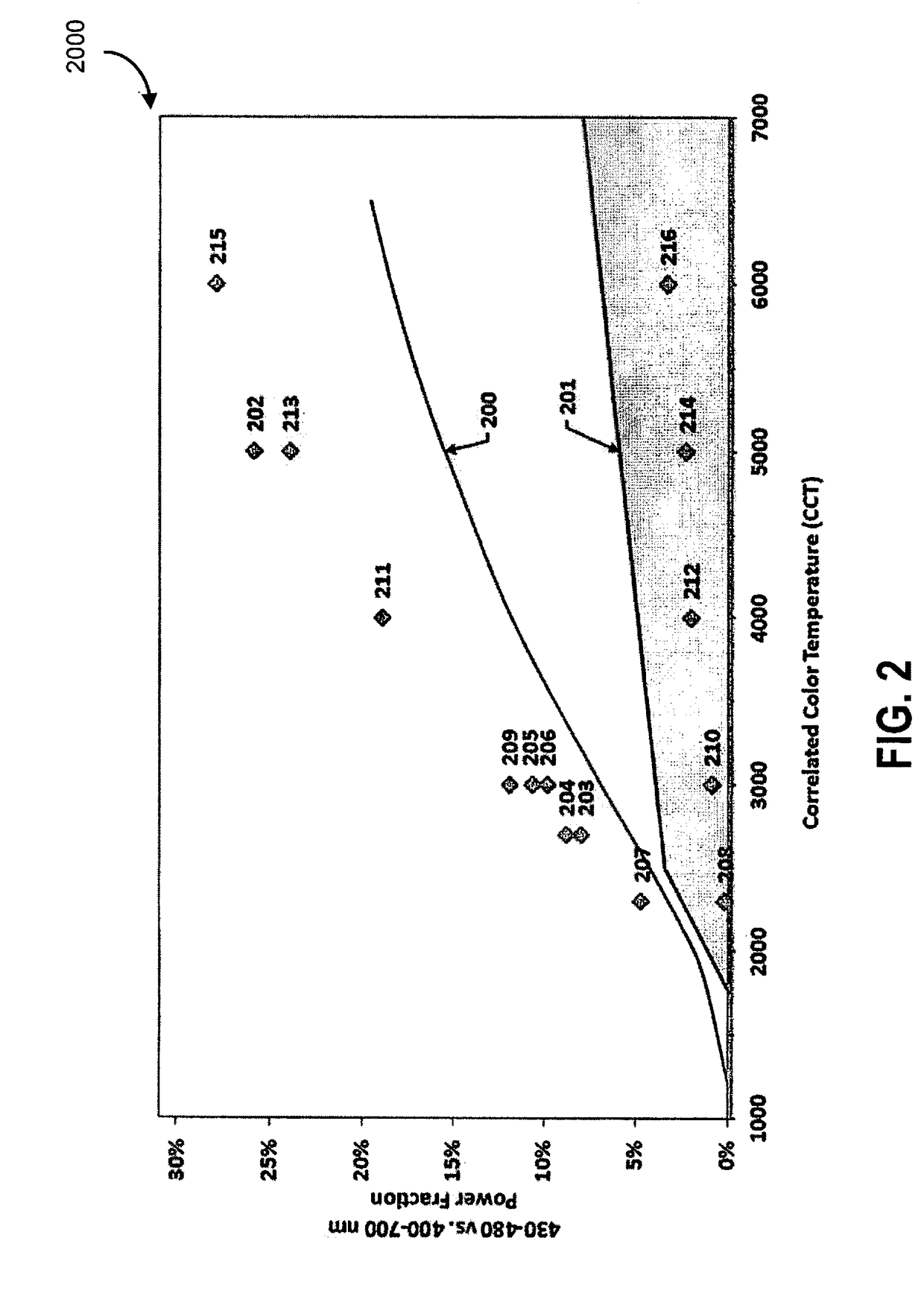Systems and methods for controlling environmental illumination
a technology of lighting and environment, applied in the field of lighting, can solve the problems of interrupting the natural circadian cycle of an individual, using conventional lighting sources,
- Summary
- Abstract
- Description
- Claims
- Application Information
AI Technical Summary
Benefits of technology
Problems solved by technology
Method used
Image
Examples
example embodiments
[0445]In some embodiments, an arrangement of lighting (e.g., positioning, orientation, type) in an electrically-illuminated environment may be performed, taking into account various natural and artificial light sources, the optics, the spectral reflectivity of surfaces and the properties of materials in the environment that fluoresce, and lighting in the environment. Light sources in the environment may be arranged and / or configured to illuminate individuals present in the environment in a manner that may be consistent with their desired or prescribed circadian treatments and / or circadian outcomes.
[0446]The light from the light sources may be arranged and / or configured such that light from the light sources reaches the individuals at various angles of incidence.
[0447]For example, light sources that may be configured to have an effect on the circadian functioning of one or more individuals, such as light sources having circadian-active spectral power distributions may be designed, po...
example environments
[0451]These environments, may for example, include environments where individuals have limited mobility. For example, environments may include the cabin of a vehicle (e.g., an airplane, a car, heavy machinery, a truck), where the positioning of various lighting sources is known and the orientation and / or positioning of individuals may be known (e.g., an operator in an operator's seat). Dashboard lighting may be known to be around and / or below eye level for the operator, while lights positioned overhead and / or natural light may be known to be above eye level of the operator.
[0452]As another example, the cockpit of an airplane or a manufacturing facility may be considered where there may be light sources that are disposed at levels above (e.g., overhead lighting) and / or light sources that are disposed below (e.g., floor lighting) the eye level of various individuals. A control system as described in some embodiments may be integrated into the lighting control of the airplane, and may ...
example wearable
Device
[0467]FIG. 18 is an illustration 1800 of an individual 1802 wearing devices configured to provide information to a control interface unit, according to some embodiments. The devices depicted include a helmet 1804 (e.g., having sensor 1806) and / or a watch 1810 (e.g., a smart watch having a sensor 1812), but may also include any other type of device having sensors, such as a sensor located on a belt 1808, a badge, etc. These devices may also track profile information, light exposure information (e.g., through the use of various light sensors), position, altitude, eye level, etc.).
Metabolism Embodiments
[0468]Some embodiments generally relate to mechanisms by which artificial light and lighting systems influence human appetite and feeding. These embodiments relate to the time of day that light exposure occurs, and the direction of the resulting change on these systems: either increasing appetite and feeding behavior, or decreasing them. These embodiments also specify the spectral ...
PUM
 Login to View More
Login to View More Abstract
Description
Claims
Application Information
 Login to View More
Login to View More - R&D
- Intellectual Property
- Life Sciences
- Materials
- Tech Scout
- Unparalleled Data Quality
- Higher Quality Content
- 60% Fewer Hallucinations
Browse by: Latest US Patents, China's latest patents, Technical Efficacy Thesaurus, Application Domain, Technology Topic, Popular Technical Reports.
© 2025 PatSnap. All rights reserved.Legal|Privacy policy|Modern Slavery Act Transparency Statement|Sitemap|About US| Contact US: help@patsnap.com



